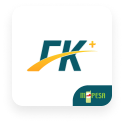1. Introduction: The Era of “Quality over Quantity” Has Arrived
From 2010 to 2020, mainstream SEO link building strategies revolved around one principle: “the more backlinks, the better the ranking.” However, after the introduction of Google’s Penguin Algorithm, this approach took a major hit. By 2025, the shift has become absolute — the number of links no longer determines success; the quality of backlinks is the true differentiator.
Google’s algorithms have become increasingly intelligent, capable of identifying spam links, repetitive anchor texts, irrelevant sources, and even paid link schemes. In this landscape, only a content-driven, naturally acquired high-quality backlink strategy can break through and deliver sustainable SEO performance.
2. Link Evaluation Standards: The Core Shift from Quantity to Quality
The following table shows how Google’s backlink evaluation has evolved:
| Evaluation Dimension | Traditional SEO (2010–2018) | Modern SEO (2020–2025) |
|---|---|---|
| Link Quantity | More links = better ranking | High volume without quality = ineffective, penalized |
| Link Source Domain | Any domain is acceptable | Authority, industry relevance required |
| Anchor Text Control | Repetitive exact-match keywords | Diversified, natural, and contextualized |
| Link Context | Not emphasized | Strong focus on semantic and thematic relevance |
| Acquisition Method | Manual placement, directory submission, paid links | Natural, content-driven, earned through PR or partnerships |
🔑 Key Takeaways: Trustworthiness, Relevance, Diversity, Contextuality, Authenticity
3. Common Link Building Mistakes vs. Best Practices
Many SEO teams still fall into the trap of chasing quantity. The following table highlights typical mistakes and their recommended solutions:
| Common Mistake | Risk / Consequence | Correct Approach |
|---|---|---|
| Focusing solely on quantity | Penalized as “unnatural links” | Prioritize authoritative, relevant sources |
| Overuse of exact-match anchors | Algorithmic penalties | Diversify with branded, URL, and generic anchors |
| Using link farms or PBNs | De-indexing or severe ranking drops | Avoid spammy sources; pursue organic links |
| Irrelevant content context | Low trust, low link value | Ensure contextual and thematic consistency |
| Excessive links from same domain | Diminishing returns | Cap links per domain and diversify sources |
4. Five Core Dimensions of High-Quality Links in 2025
To break through in SEO performance, your backlinks must meet the following criteria:
| Dimension | Explanation | How to Evaluate |
|---|---|---|
| Source Authority | Whether the linking site has credibility and influence | Moz DA > 50, Ahrefs DR > 40 |
| Industry Relevance | Relevance to your website’s niche or topic | Topic and content overlap |
| Semantic Context | Whether the link is naturally embedded in relevant text | Cohesion between link and surrounding content |
| Link Placement | Position within the content body | Preferably in top or middle of content |
| Acquisition Method | Whether it’s earned naturally or artificially placed | Natural outreach and PR-driven |
Recommended Tools: Ahrefs, Moz Link Explorer, Google Search Console, Majestic SEO
5. Content-Driven Link Acquisition: The Engine of Quality Links
In 2025, Google has clearly stated: high-quality content is the #1 driver for earning natural backlinks. The following content types attract backlinks most effectively:
| Content Type | Advantage | Suggested Strategy |
|---|---|---|
| Industry Data Reports | Unique and highly citable | Publish quarterly reports with visualizations |
| In-Depth Guides | Evergreen, frequently shared and referenced | Create structured, keyword-rich “Ultimate Guides” |
| Infographics | Easily embeddable and link-worthy | Provide embed code and branding linkbacks |
| Tool-Based Content | Useful resources like calculators or templates | Offer free tools with instructions and branding |
| Case Studies / Whitepapers | Show authority, logic, and real-world results | Add clear CTAs and keyword-optimized headlines |
6. Performance Comparison: Quantity-Driven vs. Quality-Driven Link Building
A B2B tech company applied different strategies in 2023 and 2025. The performance differences are stark:
| Metric | 2023 (Quantity-Based) | 2025 (Quality-Based) |
|---|---|---|
| Total Backlinks | 3,200 | 1,120 |
| Unique Referring Domains | 410 | 680 |
| Top 10 Keyword Rankings | 47 | 128 |
| Monthly Organic Traffic | 13,000 | 38,500 |
| Backlink Conversion Rate | 0.7% | 2.9% |
| Featured Snippet Appearances | 6 | 24 |
🔍 Conclusion: Fewer but higher-quality links not only improved rankings but significantly boosted click-through and brand exposure.
7. Execution Template: High-Quality Link Building Process in 2025
Here’s a recommended practical workflow for building high-quality backlinks:
| Step | Action | Tools / Resources |
|---|---|---|
| 1 | Identify trending topics and keyword gaps | Google Trends, BuzzSumo |
| 2 | Create expert-level, authoritative content | ChatGPT + in-house SEO editors |
| 3 | Apply structured data and SEO-friendly markup | Schema.org, Yoast, RankMath |
| 4 | Outreach to media, blogs, and influencers | Hunter.io, Pitchbox, NinjaOutreach |
| 5 | Monitor backlink quality and disavow spam | Ahrefs, Google Search Console, Disavow Tool |
| 6 | Analyze, report, and iterate | Looker Studio, Excel, custom dashboards |
8. Conclusion: Link Building Is a Long-Term Investment, Not a Shortcut
In 2025, Google has moved from “more links = better ranking” to “link quality defines your SEO ceiling.” This evolution is not just technical — it reflects Google’s deeper emphasis on brand trust, content authority, and user value.
Building high-quality backlinks is not a one-off project, but an ongoing strategy. Understanding Google’s current expectations, mastering the five dimensions of link quality, and building a collaborative content and outreach system are the true paths to long-term SEO value.





